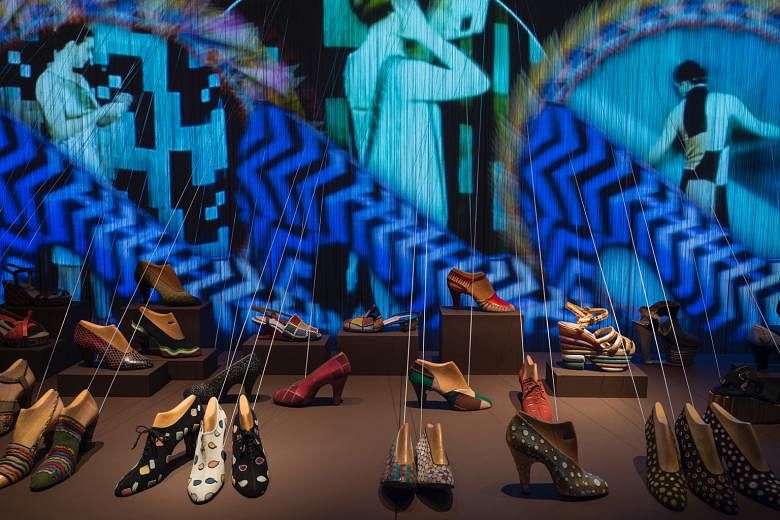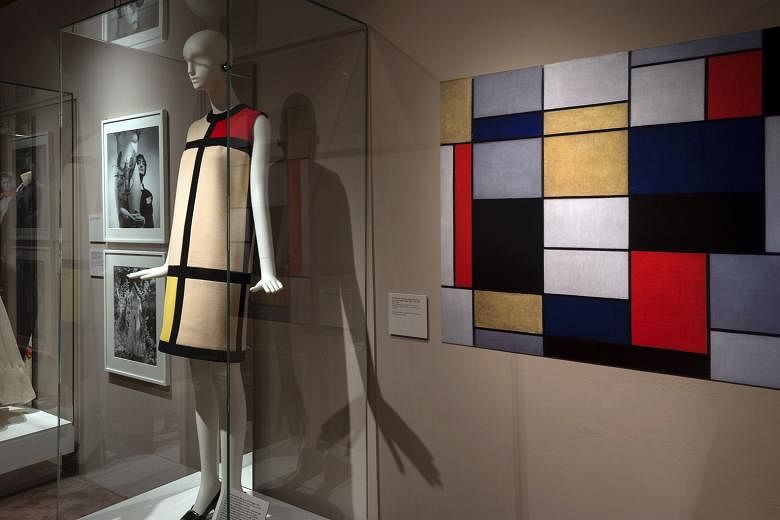At a time when luxury brands are reporting losses - with factors such as decreased tourist spending and China's ongoing economic reforms affecting the retail markets - a handful of big fashion houses are still donating money to contribute to the arts and culture in their home countries.
Italian fashion house Fendi donated $3.3 million to the restoration of the Trevi Fountain in Rome which re-opened in November last year.
Italian shoemaker Tod's is restoring the Colosseum in Rome. The company reportedly gave €25 million (S$38.3 million) to the restoration in 2011.
Italian brand Salvatore Ferragamo has also done its part, by restoring parts of the Uffizi Gallery in Florence. It donated €600,000 to the restoration of eight rooms, which opened to visitors in September last year. The rooms feature works of art from the second half of the 15th century.
That restoration was not the first sponsorship from the brand, which started 89 years ago in Florence and is best known for its signature ballerina flats with grosgrain bows.

-
Is fashion art?
-
Shoes created by Italian designer Salvatore Ferragamo that were inspired by paintings by American artist Kenneth Noland.
Illustrations for fashion magazines by American artist Andy Warhol.
Extravagant and elaborate dresses created over the years by fashion designers such as Hussein Chalayan and Martin Margiela.
These are just some of the pieces on show at Salvatore Ferragamo Museum's latest exhibition, Across Art And Fashion, which poses the question: Is fashion art? Sponsored and organised by Fondazione Ferragamo and the Salvatore Ferragamo Museum, it explores the complex relationship between art and fashion. The exhibition at the museum in Florence is refreshed with a new theme annually.
The showcase, which opened on May 19 and ends on April 7 next year, features artworks and fashion pieces from artists and designers from the 19th century to the present day.
Speaking to The Straits Times in Florence, director of the Salvatore Ferragamo Museum Stefania Ricci, 59, says the question of whether or not fashion is art is "a complex question that has no solution" and it is something that continues to have "new suggestions" as artists and designers continue to collaborate.
The exhibition attempts to reflect different aspects of both creative spheres and how they have come to interact and influence each other.
One section, titled Shapes And Surfaces, explores collaborations between artists and fashion designers as well as fashion pieces inspired by art. These include a lobster dress by Italian fashion designer Elsa Schiaparelli, in collaboration with Salvador Dali; and a cocktail dress by Yves Saint Laurent, inspired by an oil painting by Dutch painter Piet Mondrian.
Another section, Role-playing, features fashion pieces that involved such skilled craftsmanship that they border between art and fashion. These include a satin and lace dress with shirt cuffs incorporated in the collar by Amsterdam-based fashion house Viktor & Rolf and a wooden dress by Japanese designer Yohji Yamamoto.
To feature a wider range of genres and mediums at the exhibition, the showcase was organised in collaboration with several cultural institutions, including the National Central Library of Florence, the Uffizi Gallery, the Marino Marini Museum and the Prato Textile Museum.
Besides lending pieces to the exhibition, these institutions also have spaces within their premises dedicated to the exhibition's theme.
Ms Ricci says she wants the exhibition to inspire a new appreciation of art and fashion and help visitors learn something new.
"I hope guests go away thinking that fashion is not only about the clothes they wear... there is a lot of culture and research and it can be a new way to see the world."
Melissa Heng
The company has been making similar contributions to the city of Florence for years. These include donations to the restoration of the four ornamental statues of the seasons on the Ponte Santa Trinita bridge in 1996 and the restoration of the Column of Justice in Piazza Santa Trinita in 1998.
Speaking to The Straits Times in Florence two weeks ago, Ferragamo chairman Ferruccio Ferragamo says the company has been actively involved in such sponsorships to preserve such historical works for future generations to enjoy.
"I think it is our duty to give back to the city. Florence has given us a lot."
The 70-year-old, the eldest son of the label's namesake founder, says his father chose to live in Florence after returning to Italy from the United States in 1927 because its "beautiful things" inspired him.
Mr Salvatore Ferragamo was born in Bonito, Italy, in 1898, and moved to the US at the age of 16 to embark on an illustrious career as a shoemaker to the stars for the next 10 years, before returning to work in Florence until his death in 1960.
Mr Ferruccio Ferragamo also attributes part of the brand's development over the years to the cultural heritage and tradition of the fine craftsmanship in Tuscany and Florence.
He sees donations made to the city as celebrations of the label's "ties to the local area and people of Florence".
Another way that the brand contributes to the creative culture of Florence is through its museum, the Salvatore Ferragamo Museum.
Opened in 1995, it refreshes its exhibits with a new theme annually, featuring artworks from other Florentine and international museums. Iconic pieces from the archives of the Ferragamo fashion house that suit the chosen theme are included in these exhibitions.
Its latest exhibition, Across Art And Fashion, which opened last month, explores the relationship between the two creative worlds.
Iconic Ferragamo shoes on show include the 1958 Tirassegno, a suede pump with a target motif, and a cork heel platform made for American actress Judy Garland in 1938.
Branding aside, there is a more practical reason for the brand to get involved in such sponsorships.
Mr Ferragamo jokes that these contributions, which are tax deductible, are a way to "pay the rent" in Florence and that the brand intends to do so for as long as possible. He says another sponsorship is in the works, but declines to elaborate.
Salvatore Ferragamo has more than 600 points of sale internationally, including stores in the US, Canada, France, Japan, Singapore and China.
It has experienced growth from 2013 to last year. According to a press release for its 2015 financial report, total revenue for the group grew by 7 per cent to €1,430 million from 2014 to last year.
In the latest report, it registered a drop of 1.8 per cent in total revenue for the first quarter of this year, compared with the same period last year.
Changes are afoot in the company: The brand will soon get a new group chief executive officer, Mr Eraldo Poletto, current CEO of leather goods maker Furla.
He will replace Salvatore Ferragamo's current CEO Michele Norsa, who has been with the brand for a decade. According to a Bloomberg report, Mr Poletto is due to leave his current role at the end of the month.
Mr Poletto, who helped Furla grow its revenue by 30 per cent last year, will also have to fill the gap left by creative director Massimiliano Giornetti, who quit Salvatore Ferragamo in March.
The brand declined to comment on the appointment of Mr Poletto and the departure of Mr Giornetti, who was with the brand for 16 years.
On the challenges facing the retail industry today, Mr Ferragamo is realistic.
"Times are tough. All the continents are suffering from things such as currency challenges, tourism and decrease in spending. There are all kinds of reasons.
"So, we have to be very sharp to be able to tempt our customers to buy no matter what."
In Singapore, best-selling items include the Varina ballerina flat ($750) and the Vara round-toe pump ($850).
Mr Ferragamo says the brand's heritage, quality, craftsmanship, attention to detail and innovation are what make it stand out from the competition.
But he acknowledges that the brand was late to the e-commerce game. The label launched its website (www.ferragamo.com) in 2009, along with e-commerce, which was made available in the main European Union countries and the US .
Ferragamo products can now be bought online in more countries, including Japan, South Korea and Mexico.
Mr Ferragamo says: "You go on the Internet and you have a lovely view of what is available from the comfort of your home... It is a new tool and we are lucky that technology has allowed this and we must catch up."


